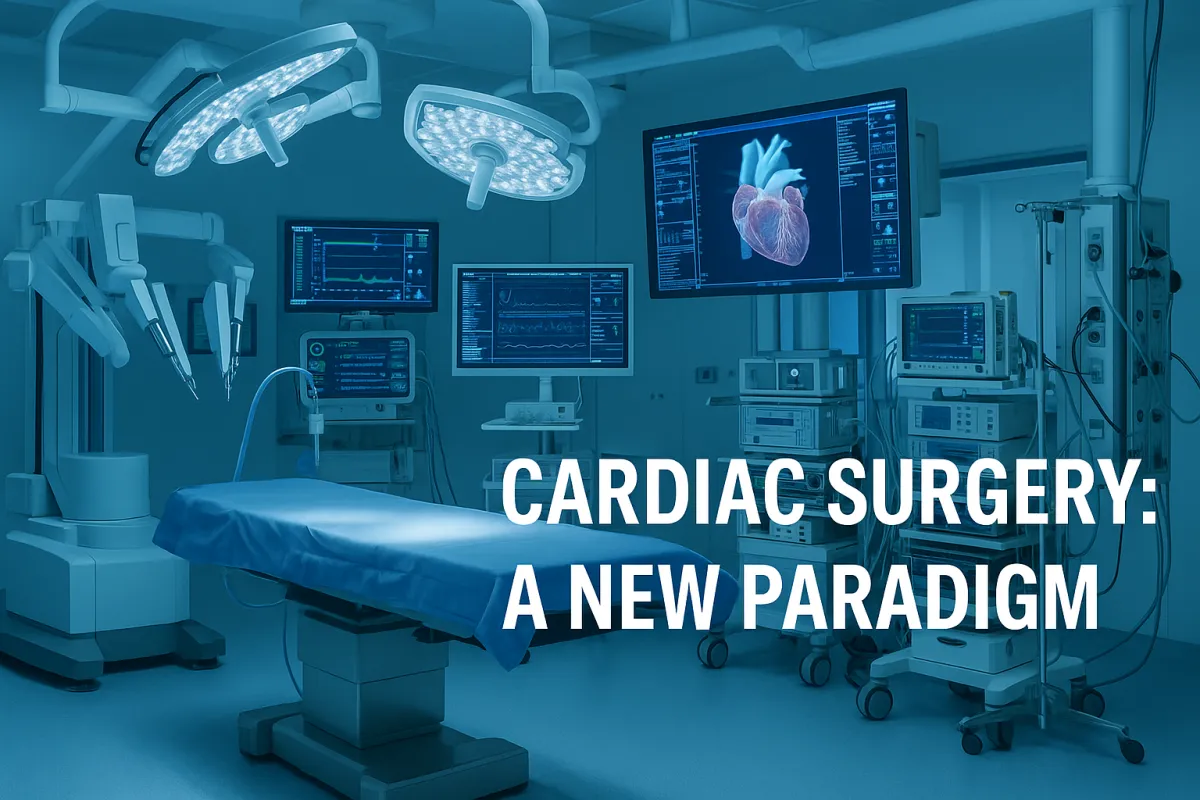
Cardiac Surgery: A New Paradigm
Introduction
Cardiac surgery has undergone transformative changes over the last two decades. Once synonymous with large incisions, long recovery times, and significant perioperative risk, the field now embraces minimally invasive techniques, advanced imaging, transcatheter options, and precision medicine.
This new paradigm in cardiac surgery is not just about the operating room—it’s about the entire continuum of care, from patient selection and prehabilitation to postoperative recovery and long-term follow-up.
For Advanced Practice Registered Nurses (APRNs), these innovations demand updated knowledge, new skill sets, and an active role in multidisciplinary heart teams.
The Traditional Model vs. The New Paradigm
Traditional Model
Large sternotomy incisions
Prolonged cardiopulmonary bypass
Long ICU and hospital stays
Recovery times often measured in months
Higher risk of complications such as infection, bleeding, and arrhythmia
The New Paradigm
Smaller or no incisions (minimally invasive or percutaneous access)
Shorter or no bypass time in select procedures
Hybrid ORs combining surgical and catheter-based capabilities
Enhanced recovery protocols shortening hospital stays to days
Data-driven patient selection and AI-assisted surgical planning
Key Drivers of the New Paradigm
1. Minimally Invasive Surgical Techniques
Modern cardiac surgeons can now perform valve repairs, coronary artery bypass grafting (CABG), and even complex congenital repairs through small thoracotomy incisions or robotic-assisted systems.
Benefits:
Less surgical trauma
Reduced postoperative pain
Shorter hospital stays
Improved cosmetic outcomes
For APRNs, perioperative care shifts toward faster mobilization, aggressive pulmonary hygiene, and early discharge planning.
2. Transcatheter Interventions
Procedures like Transcatheter Aortic Valve Replacement (TAVR) and MitraClip for mitral regurgitation have moved from experimental to standard practice for many patients.
Implications for APRNs:
Familiarity with access site care (femoral, transapical)
Understanding of antiplatelet/anticoagulation protocols
Monitoring for procedure-specific complications such as vascular injury or paravalvular leak
3. Hybrid Procedures
Hybrid cardiac surgery combines surgical precision with catheter-based speed—for example, performing a minimally invasive CABG to the most critical vessel and stenting other vessels in the same setting.
Advantages:
Reduced operative time
Tailored treatment for complex anatomy
Fewer complications in high-risk patients
APRN involvement includes peri-procedural education and care coordination between surgical and interventional cardiology teams.
4. AI and Advanced Imaging
Artificial intelligence and advanced 3D imaging are now used for:
Predicting surgical risk and outcomes
Planning valve replacements and complex congenital repairs
Guiding intraoperative navigation in real time
Clinical Impact:
Improved patient selection
Reduced operative time
Enhanced precision in repairs and prosthetic placement
APRN professionals should develop competency in interpreting AI-generated reports and integrating them into care discussions.
5. Enhanced Recovery After Surgery (ERAS) in Cardiac Care
Originally developed in colorectal surgery, ERAS protocols now optimize nutrition, pain control, mobilization, and psychological readiness for cardiac patients.
ERAS Benefits in Cardiac Surgery:
Decreased ICU length of stay
Fewer complications
Faster return to baseline function
APRN Role:
Lead ERAS protocol adherence in the ICU and step-down units
Educate staff on protocol components
Monitor compliance and patient outcomes
Shifts in Patient Selection and Timing
In the past, many patients were referred for surgery late in disease progression due to fear of operative risk. Now, with safer, less invasive options, earlier intervention is often recommended—improving survival and quality of life.
Examples:
Operating on severe aortic stenosis before symptom onset in certain patients
Repairing degenerative mitral valves early to preserve ventricular function
APRN providers play a vital role in educating patients and referring providers about evolving timing guidelines.
Postoperative Care in the New Era
The postoperative phase is where the new paradigm’s benefits are most visible. Shorter hospital stays and faster mobilization mean APRNs must be adept at rapid clinical assessment, early complication recognition, and discharge readiness evaluation.
Focus Areas for APRNs:
Pain management with minimal opioids (multimodal analgesia)
Early extubation protocols
Ambulation within 24 hours post-surgery
Telemonitoring for early post-discharge complications
Training and Education for APRNs
To thrive in this evolving landscape, APRNs need:
Continuing education in structural heart disease and hybrid interventions
Competence in vascular access management
Familiarity with advanced hemodynamic monitoring
Skills in patient education for minimally invasive procedures
APRN WORLD offers cost-effective, clinically relevant CE programs with visually engaging modules on these innovations, ensuring providers remain at the forefront of cardiac surgical care.
The Future: What’s Next in Cardiac Surgery?
Bioengineered Valves: Longer-lasting, anticalcification-treated tissue valves.
Nanotechnology in Grafts: Reducing thrombosis and infection risk.
Fully Robotic CABG: No sternotomy, fully endoscopic approach.
Precision Medicine: Tailoring surgical strategies to genetic and molecular patient profiles.
APRN involvement will likely expand into more autonomous roles in pre- and post-procedure management as surgical and interventional lines continue to blur.
Conclusion
The new paradigm in cardiac surgery is defined by less invasive techniques, smarter technology, earlier interventions, and faster recoveries. These advancements reduce patient risk, improve outcomes, and challenge the traditional boundaries between surgery and interventional cardiology.
For APRNs, this is both an opportunity and a responsibility—to stay informed, adapt quickly, and lead the way in patient-centered cardiac care. Through targeted continuing education, APRN WORLD equips providers with the expertise needed to excel in this transformative era.










